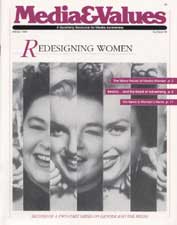How to Conduct a Gender Survey of Your Local Newspaper
|
This article originally appeared in Issue# 49
|
A little time and a set of four color highlighters are all you need to evaluate your local paper's treatment of female reporters and newsmakers.
A week of monitoring should provide a good sample. As you read your papers, use blue and red to mark male and female bylines. The remaining two colors can be used to mark references to men and women as newsmakers (proper names only – no pronouns) in photos, headlines, captions and stories.
After marking each day's paper, count the total number of bylines and divide the number of female bylines by the total. Use the same procedure to find the ratio of male and female newsmakers.
In tallying photographs, count the total number of photographs and the total amount of times one or more females appear in the pictures. For example, a page contains three pictures: one of a building, one featuring a group of men and women, and one of a female alone. In this case, females are represented in 2/3rds or 66 percent of the photos on that page.
At the end of the monitoring period, add your daily percentage for each category and divide each by the number of days your paper was issued. This will give you the average percentage of female bylines, female representation in photographic coverage and references to females. After only a few days, patterns will emerge. Discuss in a group or class:
- When women make the news, what is it usually about?
- What kinds of stories do women reporters get to write about?
- What adjectives describe the women shown in photographs?
Follow-up Action
Conducting a gender study is an excellent activity for women's groups or even high school classes. Follow up your monitoring project with a strategy session to publicize your report, including discussing the findings with the paper's editors or stockholders. You can use these same survey techniques to assess television news broadcasts.
— Center for Media Literacy



